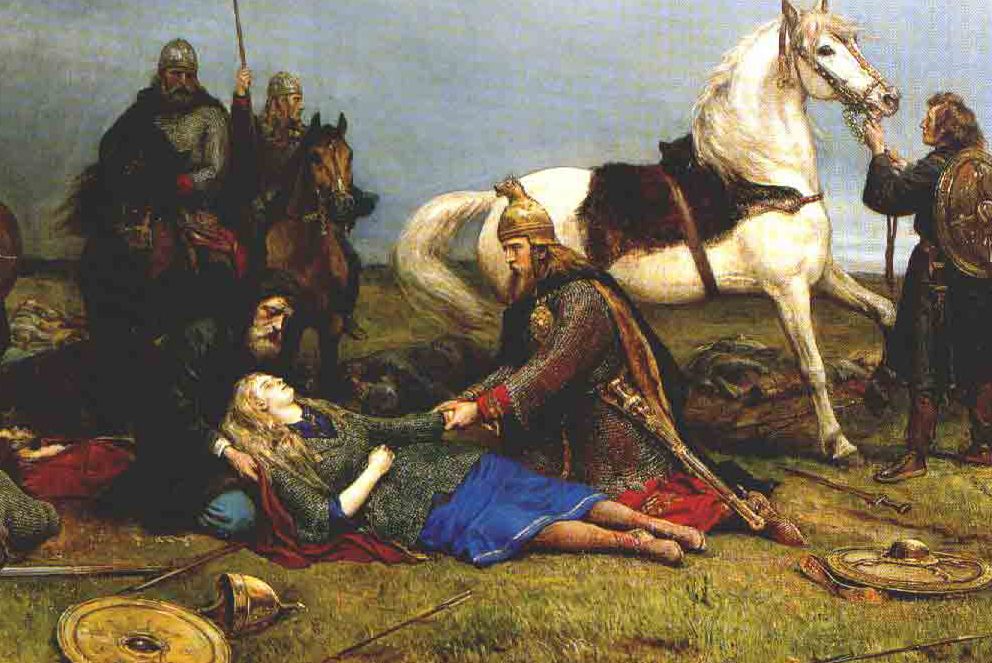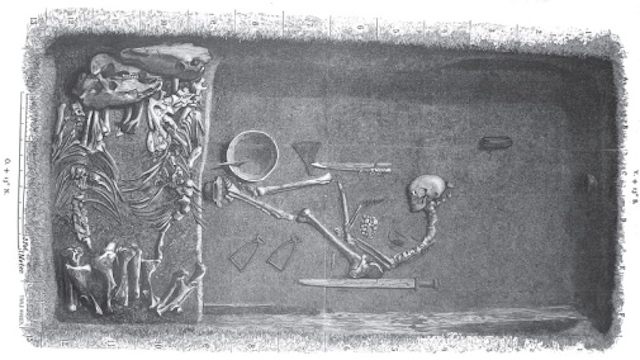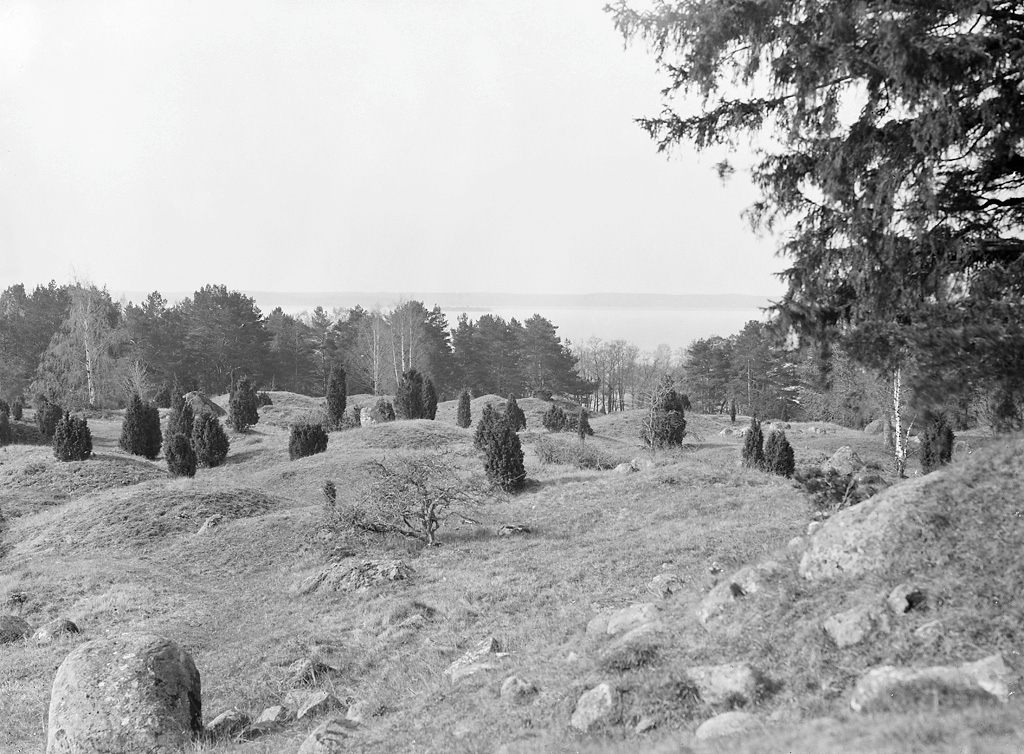Found: Evidence That a Lavish Burial Honored a Viking Warrior Woman
Turns out they weren’t just myths.

In the 19th century, an archaeologist working on excavations of Birka, Sweden, a thriving Viking settlement founded in the 9th century, discovered a grave filled with astonishing objects. Buried alongside the deceased were a sword, an axe, a spear, arrows, a knife, and shields, along with two horses, a mare, and stallion. The skeleton held a board game—a strategy game, used for war planning—indicating that, in life, this person had proved their military prowess.
It was, as one archaeologist told The Local, the “ultimate warrior Viking grave.” Archaeologists had previously assumed that it belonged to a man, because everyone knew that only Viking men were warriors.
Now, in a new paper, published in the American Journal of Physical Anthropology, a team of scientists has offered new evidence that this ultimate Viking warrior was, in fact, a woman.

Anna Kjellström, an osteologist at Stockholm University, was first intrigued by the warrior skeleton when she was examining it for a different project, The Local reports. For a man’s skeleton, it didn’t look quite right, she thought. It had slimmer cheekbones and wider, more feminine hipbones. To the osteologist, it looked a lot like a woman’s skeleton.
It turned out that an osteological analysis in the 1970s had identified the skeleton as female, and, as Kjellström wrote in a 2016, in all, “three different osteological examinations all found that the individual was a woman.” But that didn’t convince scholars that this individual could have been a Viking warrior woman. After all, everyone just knew that Viking warriors were men.
In the new paper, Kjellström and colleagues extracted and analyzed DNA from the individual left canine tooth and left arm bone. Among the results of the test: There was no Y-chromosome anywhere to be found. This person was a woman.

Should that be surprising? As the authors of the new paper write, there are written reports of Viking women warriors, but still “women warriors have generally been dismissed as mythological phenomena.” Even when other women have been found buried with weapons, they write, archaeologists have argued that the women were given these grave goods for some other reason—that they “could have been heirlooms, carriers of symbolic meaning or grave goods reflecting the status and role of the family rather than the individual.”
If men are buried with armaments, though? Clearly warriors.
Maybe it’s time to just admit it: Even if most Viking warriors were men, Viking women warriors definitely existed, and, if this grave is any evidence, they could be very, very good at their job.













Follow us on Twitter to get the latest on the world's hidden wonders.
Like us on Facebook to get the latest on the world's hidden wonders.
Follow us on Twitter Like us on Facebook